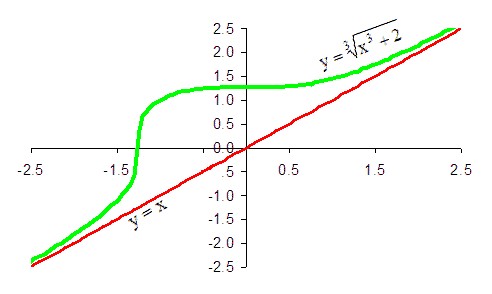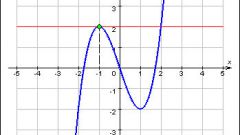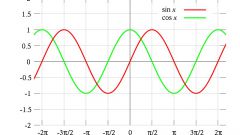Instruction
1
If the given function has asymptotes, they can be vertical or inclined. There is also a horizontal asymptote, which is a special case of the oblique.
2
Suppose that you are given a function f(x). If it is not defined at some point x0 and the closer x to x0 from the left or from the right f(x) tends to infinity, then at this point the function has a vertical asymptote. For example, at the point x = 0 lose the meaning of the function 1/x and ln(x). If x → 0 then 1/x → ∞ and ln(x) → -∞. Therefore, both functions at this point have a vertical asymptote.
3
Oblique asymptote — the line to which unqualifiedly seeks the graph of the function f(x) as x increases or decreases indefinitely. A function can have vertical, and oblique asymptotes.
For practical purposes distinguish between slanted asymptotes at x → ∞ and x → -∞. In some cases, a function may tend to the same asymptote in both directions, but generally speaking, they do not necessarily coincide.
For practical purposes distinguish between slanted asymptotes at x → ∞ and x → -∞. In some cases, a function may tend to the same asymptote in both directions, but generally speaking, they do not necessarily coincide.
4
Asymptote, as any oblique line, has an equation of the form y = kx + b where k and b are constants.
Video will be a slant asymptote of the function when x → ∞, if the desire x to infinity of the difference f(x) - (kx+b) tends to zero. Similarly, if this difference tends to zero when x → -∞, the direct kx + b is a slant asymptote of the function in this direction.
Video will be a slant asymptote of the function when x → ∞, if the desire x to infinity of the difference f(x) - (kx+b) tends to zero. Similarly, if this difference tends to zero when x → -∞, the direct kx + b is a slant asymptote of the function in this direction.
5
To understand whether the given function is a sloping asymptote, and if so to find its equation you want to calculate the constants k and b. Method of calculation doesn't change no matter which direction you are looking for an asymptote.
Constant k, also called the slope of the inclined asymptote is the limit of the ratio f(x)/x when x → ∞.
For example, the path set function f(x) = 1/x + x. The ratio f(x)/x is in this case equal to 1 + 1/(x^2). Its limit when x → ∞ is equal to 1. Hence, the given function has a slanted asymptote with the slope 1.
If the coefficient k is obtained zero, this means that the oblique asymptote of the given function is horizontal and its equation is y = b.
Constant k, also called the slope of the inclined asymptote is the limit of the ratio f(x)/x when x → ∞.
For example, the path set function f(x) = 1/x + x. The ratio f(x)/x is in this case equal to 1 + 1/(x^2). Its limit when x → ∞ is equal to 1. Hence, the given function has a slanted asymptote with the slope 1.
If the coefficient k is obtained zero, this means that the oblique asymptote of the given function is horizontal and its equation is y = b.
6
To find the constant b, that is the offset we need direct, we need to calculate the limit of a difference f(x) - kx. In our case this difference is equal to (1/x + x) - x = 1/x. When x → ∞ the limit of 1/x is equal to zero. Thus, b = 0.
7
The final conclusion is that the function 1/x + x is a slanted asymptote toward plus infinity whose equation is y = x. In the same way easy to prove that this video is a slant asymptote of the given function in the direction of minus infinity.












